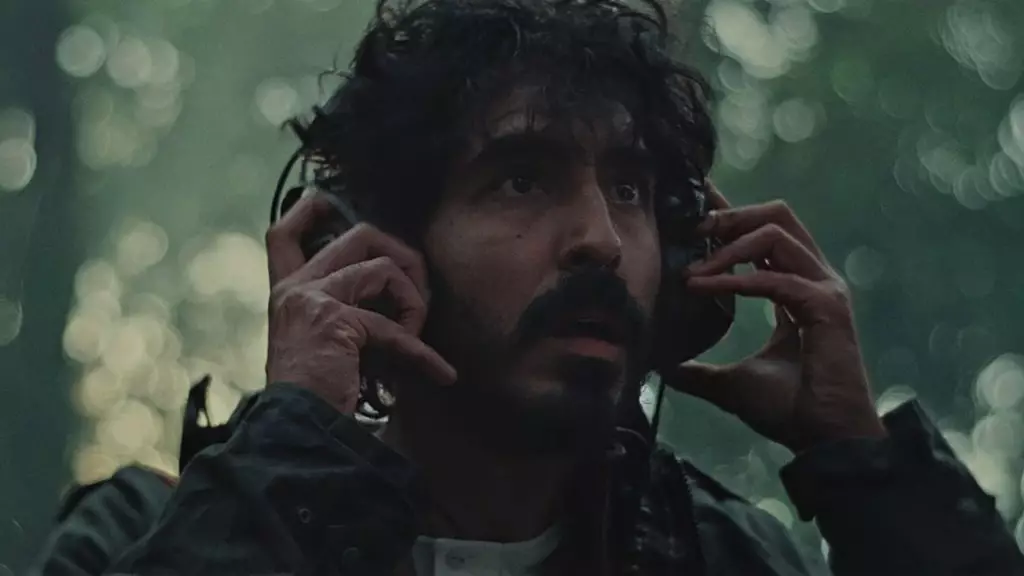In “Rabbit Trap,” British writer-director Bryn Chaney embarks on an intricate exploration of the human psyche, grounded in the rich tapestry of Celtic folklore. Set against the backdrop of the Welsh countryside in 1973, the film navigates the delicate interplay between creativity and psychological turmoil, all through the lens of sonic immersion. The feature debut from Chaney invites audiences to witness the enigmatic journey of musical couple Darcy and Daphne, portrayed by Dev Patel and Rosy McEwen, as they seek inspiration in isolation. Their artistic retreat quickly spirals into a labyrinth of mystical shadows, where the line between reality and the otherworldly becomes alarmingly blurred.
At the heart of “Rabbit Trap” lies the pivotal role of sound, masterfully harnessed through the use of field recordings. Darcy’s obsession with capturing the sounds of nature—dripping water, rustling leaves, and rhythmic clinks of metal—serves a dual purpose. Not only do these auditory elements enhance the film’s immersive experience, but they also symbolize the sacredness of creation itself. In one of the film’s poignant lines, Darcy muses that “sound is a ghost, and your body is the house it haunts.” This philosophy reverberates throughout the film, as moments of euphoria are woven together with visceral dread. Chaney’s decision to create a soundscape that reflects both the enchanting and the ominous invites viewers to engage with the characters on a deeper emotional level, exploring their triumphs and fears simultaneously.
The narrative swiftly delves into darkness as Darcy grapples with his inner demons, most notably his experiences with sleep paralysis. The juxtaposition of Daphne’s creative awakening against Darcy’s struggles starkly encapsulates the often tumultuous relationship between artistry and mental health. As Daphne records her partner’s restless nights, the haunting echoes of his troubled subconscious offer a raw reflection of their reality, teetering precariously between inspiration and despair. The film’s sound design becomes a tool for unearthing unspoken fears, fostering an intimate connection that transcends dialogue. This approach not only emphasizes the loyalty and vulnerability shared between the couple but also highlights the often hidden emotional scars that may threaten to unravel their bond.
As the narrative unfolds, a nameless child, delightfully portrayed by Jade Croot, enters the fray, adding an additional layer to the story. His innocent curiosity about the couple’s artistic pursuits juxtaposes the burgeoning tension brought on by Darcy’s mental struggles. Through folklore and playful encounters, Croot’s character serves as both a guide and a mirror, reflecting the couple’s strained dynamic while also foreshadowing impending chaos. The natural chemistry that develops among the trio showcases an emotional spectrum—ranging from paternal warmth to the blurry edges of dread—effectively peeling back layers of trauma and insecurity that abide just beneath the surface.
Breaking Through the Darkness
In the end, “Rabbit Trap” is not merely a horror film; it’s an evocative narrative about the confluence of sound, creativity, and the human experience. Chaney has successfully crafted a multi-dimensional tale that resonates on both emotional and sensory levels, allowing audiences to feel the weight of silence as much as the power of sound. The film underscores the necessity of facing one’s fears and the existential dread that accompanies the act of creation. With Patel delivering a powerful performance that resonates with raw vulnerability, and McEwen embodying an artistic spirit battling outer and inner darkness, the film leaves viewers with an unsettling yet thought-provoking message: that our creativity, while a source of joy, is often entwined with our deepest shadows.
In essence, “Rabbit Trap” stands as a testament to Bryn Chaney’s imaginative prowess, promising audiences a haunting yet captivating cinematic journey that challenges them to confront the ghosts that dwell within their own creative houses.
